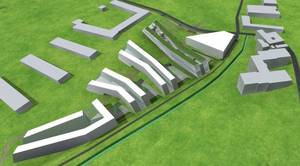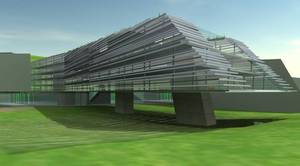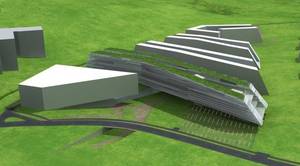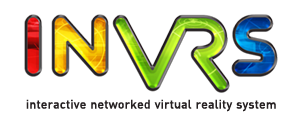Entertainment - Space Trash
Virtual Reality (VR) and new media art are two topics that have always been closely intertwined. VR as an ideal tool to stimulate the user’s sense in order to create immersion and presence, and new media art using this technology form a natural symbiosis in order to foster creativity and circulate ideas. By combining three different groups from the areas of VR software development, interface design and 3D modeling a development process was established in order to design and create a VR application using novel input devices. The Space Trash game was developed to demonstrate the capabilities of VR technology, software aspects of Networked Virtual Environments (NVEs), design considerations of novel input devices as well as modeling approaches for real-time 3D objects. It was developed for the Lange Nacht der Forschung Oberoesterreich (LNDF) being part of the European Researchers' Night 2008 in cooperation between:
- Institut für Graphische und Parallele Datenverarbeitung (GUP)
- Zentralen Informatikdienst der JKU (ZID)
- Interface Culture (IC) der Kunstuniversität Linz
- The Visioneers
A short video is available under: http://www.youtube.com/watch?v=e_WsS2PAMlg .
A preliminariy webpage providing information can be found under: http://www.spacetrash.org .
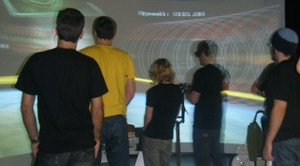
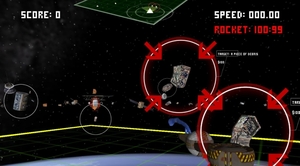
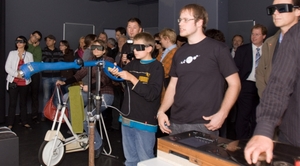
Entertainment - netOdrom
The netOdrom application was initially developed for a public event - the Lange Nacht der Forschung (Long Night of Science) - on October 1st 2005. It was designed to demonstrate a variety of algorithms in the field of Networked Virtual Environments. The application is a networked simulation of fictional motor race. What looks like a game demonstrates a physics engine, swarming algorithms, particle systems, character animation and a variety of modelling techniques. It was developed in cooperation between:
- Institut für Graphische und Parallele Datenverarbeitung (GUP)
- Zentralen Informatikdienst der JKU (ZID)
- Institut für Medien, Bereich Medientechnik und Vermittlung (DMA) der Kunstuniversität Linz
- The Visioneers
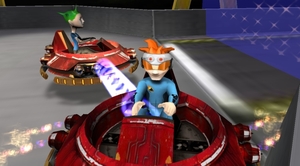
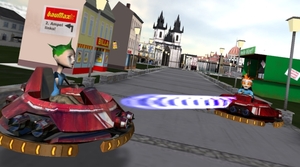
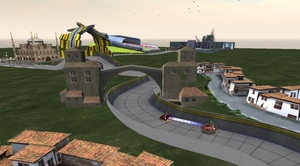
Disaster Simulations - Floodviz
After the successful completion of the CrossGrid project, work with the partners form Slowakia continued in the area of visualisation. GUP is developing the immersive visualisation of erosion data from the coasts of France and forest fire data from an area in Slowakia. The visualisation is capable to support multiple geographically dislocated observers using CAVEs, Curved Screens, powerwalls or desktop PCs for display purposes. With that technology the users are able to collaboratively analyse and manipulate the given datasets over arbitrary distances in an intuitive way.
- Institute of Graphics and Parallel Processing (GUP)
- Institute of Informatics of Slovak Academy of Sciences (SAV)
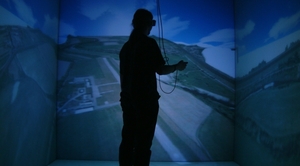
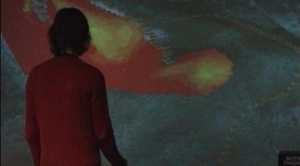
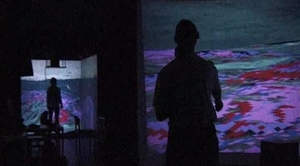
Safety Training - SAVE Walkthrough
The SAVE project was run in cooperation between the Institute of Graphics and Parallel Processing (GUP), the Institute for Application Oriented Knowledge Processing (FAW) of the Johannes Kepler University (JKU) and the OMV. It allows to train safety-relevant actions and processes in a virtual refinery. A multi-user walkthrough enhanced with graphical effects was developed on the basis of the original models using the inVRs framework. The original application was developed in cooperation between:
- Institute of Graphics and Parallel Processing (GUP)
- Institute for Application Oriented Knowledge Processing (FAW)
- OMV
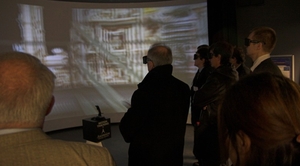
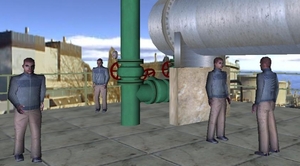
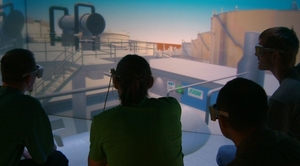
Architecture Visualisation
The recent interest of using Virtual Reality in architecture, and architectural elements in virtual environments has created an enormous demand for exploiting the capabilities of both fields to support each other. The Science Park is a new building project of the Johannes Kepler University, Linz. To get a picture of the overall architecture as well as an insight on which design problems might arise the initial drafts were visualised in stereoscopic 3D graphics. The application was developed in cooperation between:
- Institute of Graphics and Parallel Processing (GUP)
- The Visioneers
